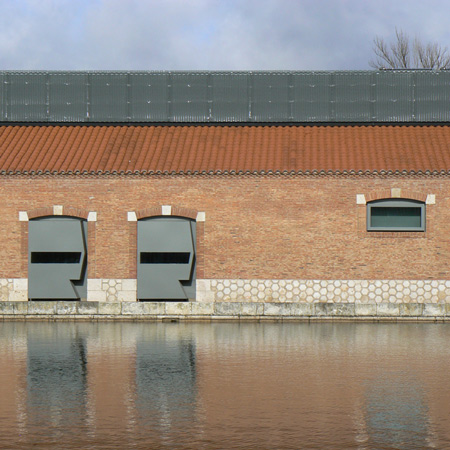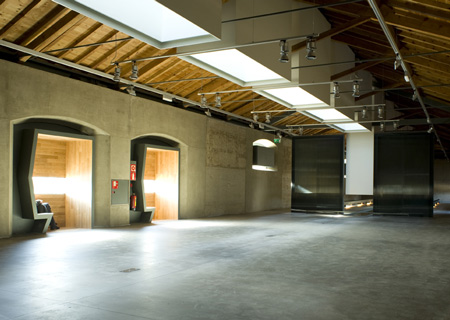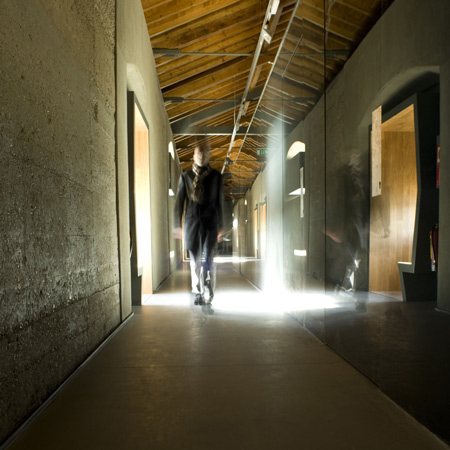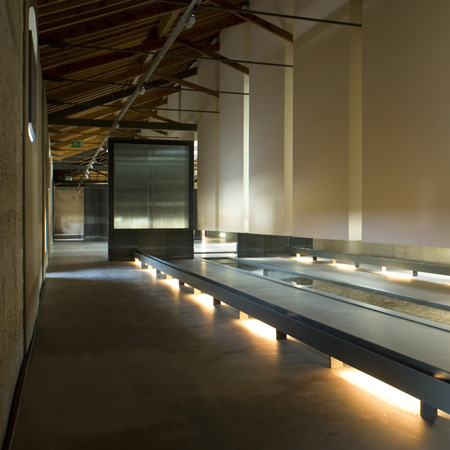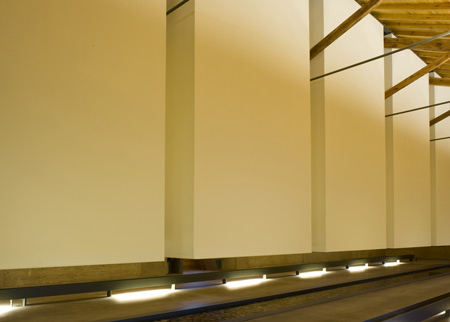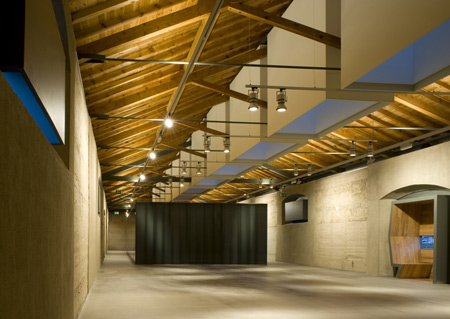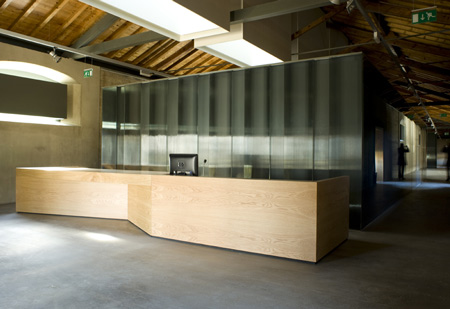The sites are surrounded by commercial buildings and there are constant pedestrian and traffic flow. I chose site 1 because it is sandwiched by two buildings so the proposed building will only receive sunlight from the roof. Site 1 has front and back accesses. I thought it will be interesting to focus on this project ways of introducing natural light.
First I analyzed the given environment, the arrangement of the construction to the front street and the site. Then, I thought the space should be intelligent . With a glance of people passing the street, they would be naturally drawn to the building. So I first established a grid that runs parallel with the street, the continuous solid wall, followed by a curved curtain wall, then it leads to a tunnel which help put the visitors in a proper mood for seeing the paintings. All suggest a gesture of welcome.
Considering that the building might be used as other purposes, I would like to make it neutral. The building consists of three main parts, namely the front commercial space, the central gossip space and the back gallery space. There are a series of galleries: a auditorium or lecture room in the front,a conventional indoor gallery for canvases and sculpture, a tunnel gallery for preparing the visitors for the artworks, a central grand hall for large murals and a place of gossip and a corridor gallery beside the central hall.
I tried to play with lighting with different techniques. I also referenced Louis Kahn's theory of light that people are made of light, buildings are made of light. People feel refreshed when they are in contact with natural light. The roof is specially made to introducing sun light. There is a long space where opaque glass is used to filter light. The filtered light will then diffuse through the concrete blocks, which I gained inspiration from my tutor and the National Portrait Gallery. They make the space underneath fictional. The use of light on the roof structure shows the length of the building and emphasized the structure, the division of space.(as can be seen in the plans)
The entire building opens to the north, bringing soft light into the gallery. The purpose is to make natural light in the gallery gentle and luminous, providing a sense of connection to nature and life.
The Artist:
Australian artist Robert Owen
The Artwork:
The artwork is based around the work of Robert Owen, in particular Cadence #1 which focuses on the span of time using diverse colours.
BUT the gallery also accommodates for modern paintings and sculpture.
In general, it is a neutral gallery for modern artists and artwork.
Characteristics of the Art Dealer:
He is a very rich and well educated man.
He is not afraid of being seen and wants to show off his collections.
He likes communicating with visitors to the gallery.
He wants to make it a space for gossip or a focal point of Newtown.
Narrative:
A neutral and modern gallery for a well educated man who wants to create a space for gossip.

























